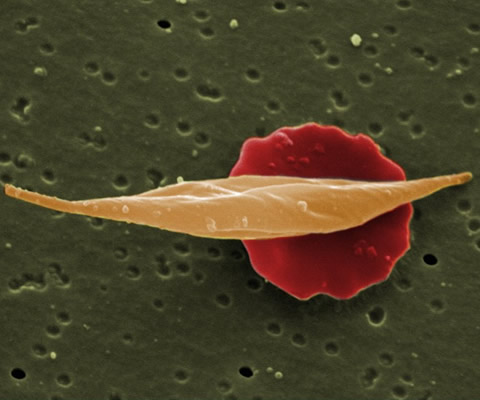Sickle Cell Pain course



This session describes the causes, presentation and management of pain in sickle cell disease.
Learning Objectives
By the end of this session you will be able to:
- Describe the pathophysiology of acute sickle cell crisis
- Explain how multimodal analgesia is used in acute sickle cell crisis
- Identify the side-effects of strong opioid analgesia in acute sickle cell crisis
- Suggest strategies to minimize the potential risk of strong opioid side-effects
- Explain how other common pain syndromes are managed in sickle cell disease
Sickle cell disease (SCD) affects the haemoglobin in red blood cells causing them to become ‘sickle-shaped'.
Paul is the clinical lead for haemoglobinopathies (including sickle cell disease) at Barts Health NHS Trust and the East London and Essex Clinical Haemoglobinopathy Network. He trained in medicine at Oxford University and in haematology at the Royal Free Hospital, University College Hospital and Great Ormond Street Hospital in London. He completed a doctorate of Medicine while working at The Royal Free Hospital School of Medicine.
He has held his current consultant post since 1998, during which he has established a large service for children and adults with Sickle Cell Disease. He has developed oral-based protocols for control of acute sickle pain, and has designed and implemented clinical trials for systematic evaluation of pain management in sickle cell disease.
Paul has contributed to evidence-based acute pain guidelines in sickle cell disease, is co-author of Sickle Cell Disease in Clinical Practice (Springer, 2015).
Paul is a content author for the e-PAIN project.


- Anaesthesia Fundamentals | Physiology | Ventilatio...
- Posted By eIntegrity Healthcare e-Learning
- Posted Date: 2024-12-26
- Location:Online
- This session describes how and why ventilation and perfusion vary in the healthy lung. Causes of hypoxia, such as hypoventilation, increased dead space and shunt, are discussed to help the trainee explain and manage hypoxia clinically.
- Anaesthesia Fundamentals | Physiology | Pulmonary ...
- Posted By eIntegrity Healthcare e-Learning
- Posted Date: 2024-12-26
- Location:Online
- This session covers the measurement and clinical importance of lung volumes, including functional residual capacity and dead space. Information regarding the performance and interpretation of flow-volume loops is also included.
- Anaesthesia Fundamentals | Physiology | Co2 Carria...
- Posted By eIntegrity Healthcare e-Learning
- Posted Date: 2024-12-26
- Location:Online
- This session covers the physiology of how carbon dioxide is carried by blood, including its conversion into bicarbonate ions and the role of the red blood cell and haemoglobin in this process. The session also describes how buffers work, and the fundament
- Anaesthesia Fundamentals | Physiology | Function o...
- Posted By eIntegrity Healthcare e-Learning
- Posted Date: 2024-12-26
- Location:Online
- This session focusses on the function of haemoglobin in oxygen (O2) carriage from the lungs to other tissues where cells are supplied with the O2 required for oxidative phosphorylation in the mitochondria. We will cover the structure
- Anaesthesia Fundamentals | Physiology | Gaseous Ex...
- Posted By eIntegrity Healthcare e-Learning
- Posted Date: 2024-12-26
- Location:Online
- This session will introduce you to the physiological effects of altitude and the adaptations that occur with acclimatization. It also introduces the pathology and physiology of high pressure and decompression.







